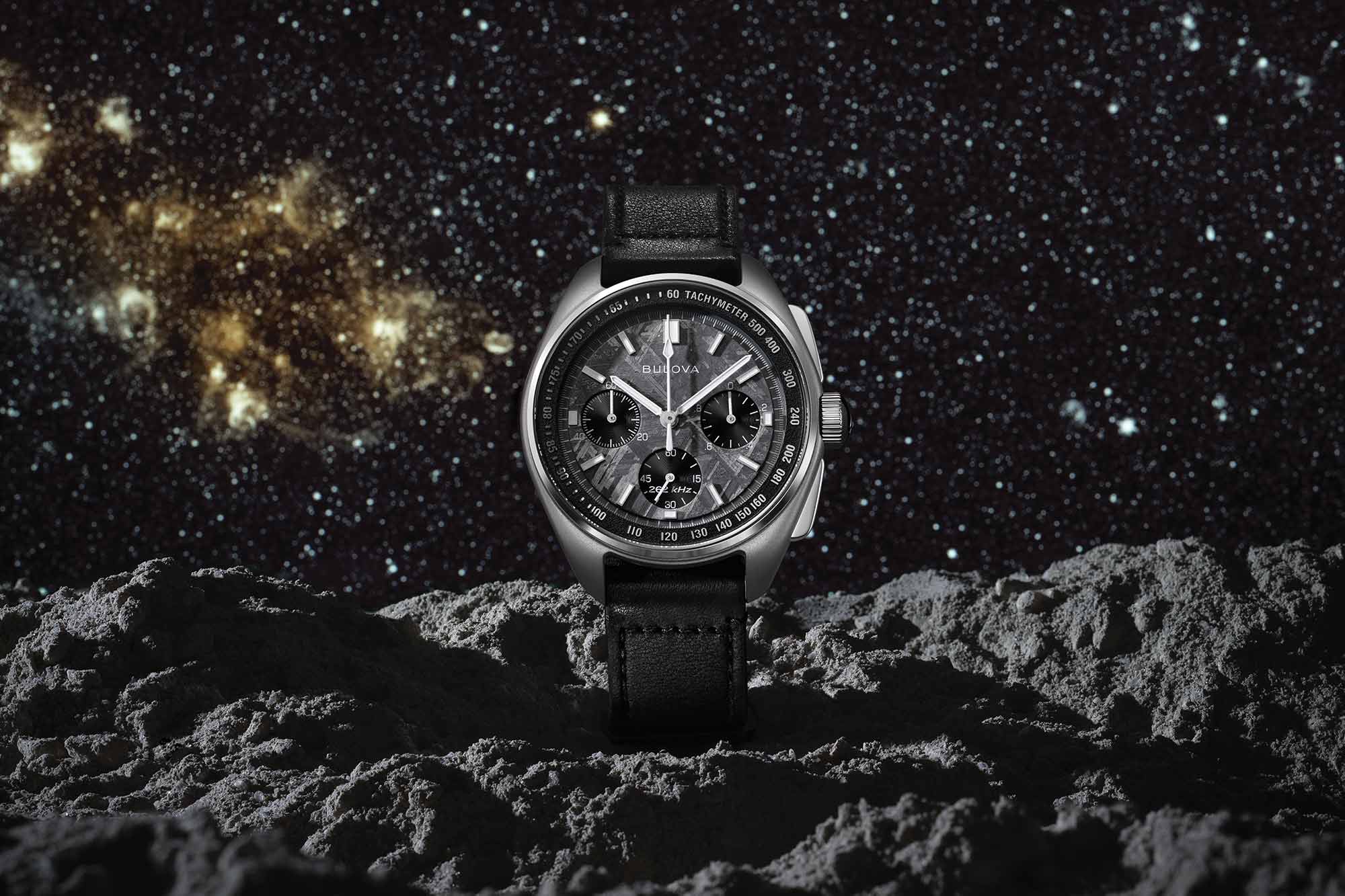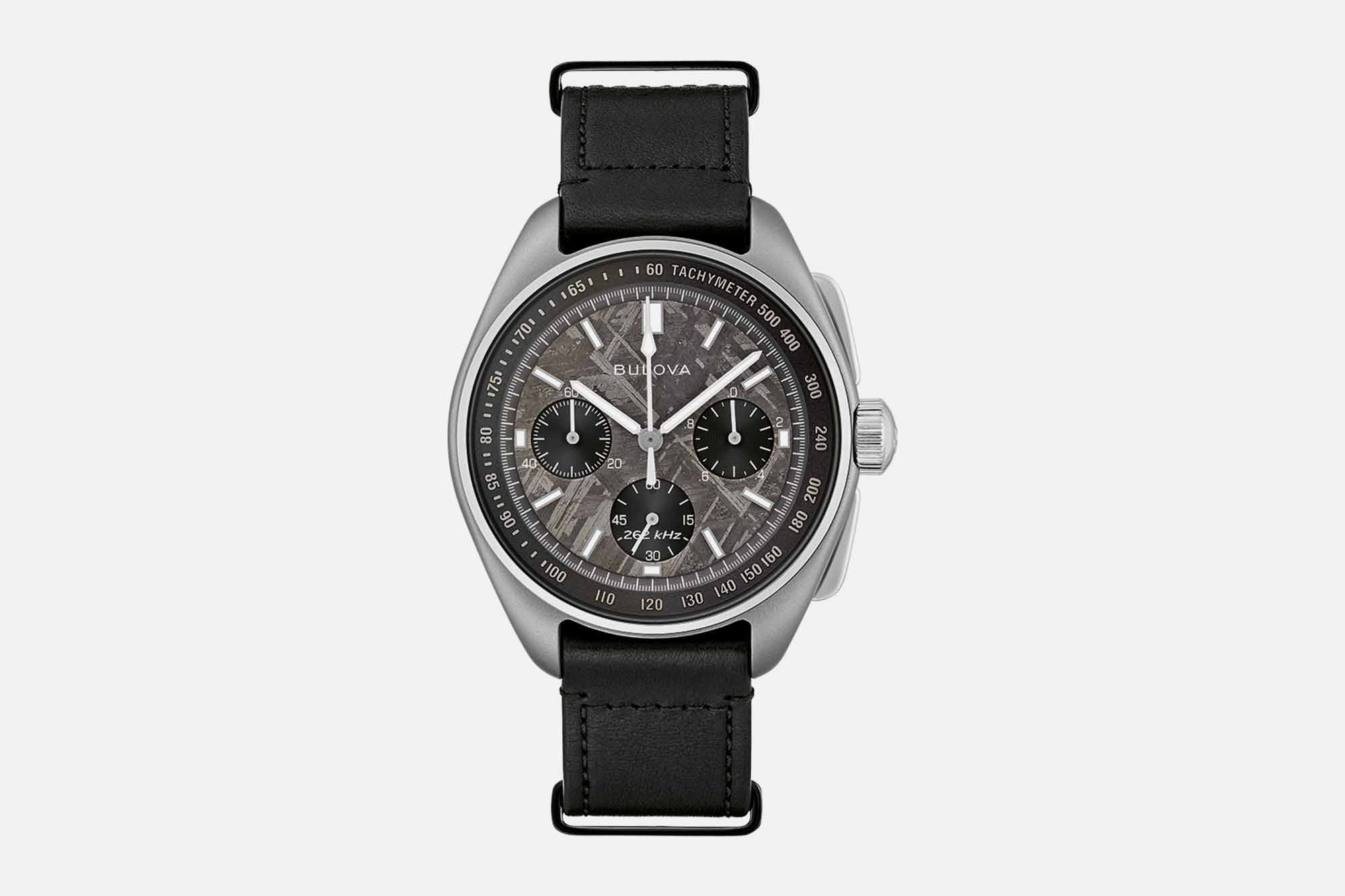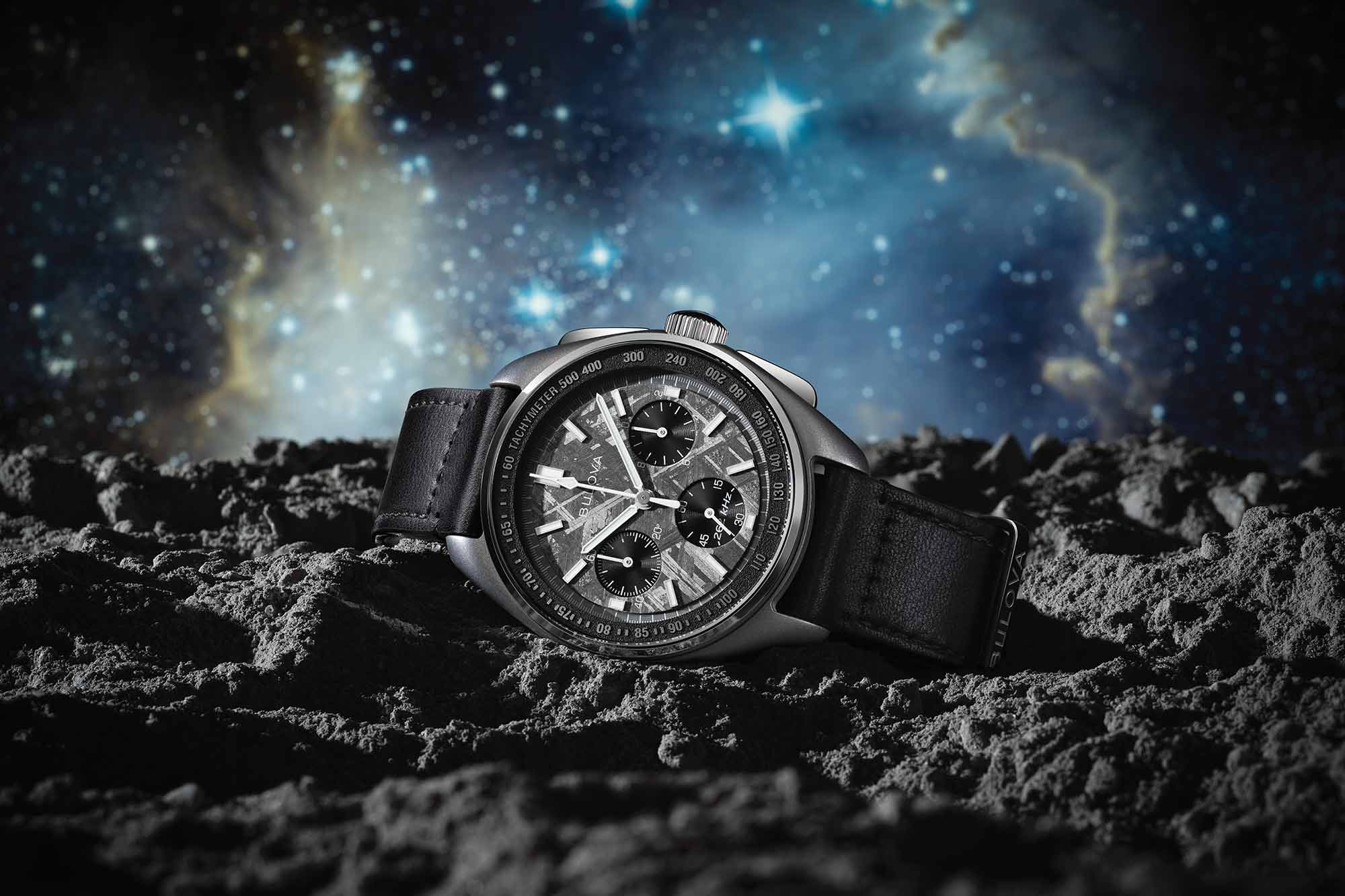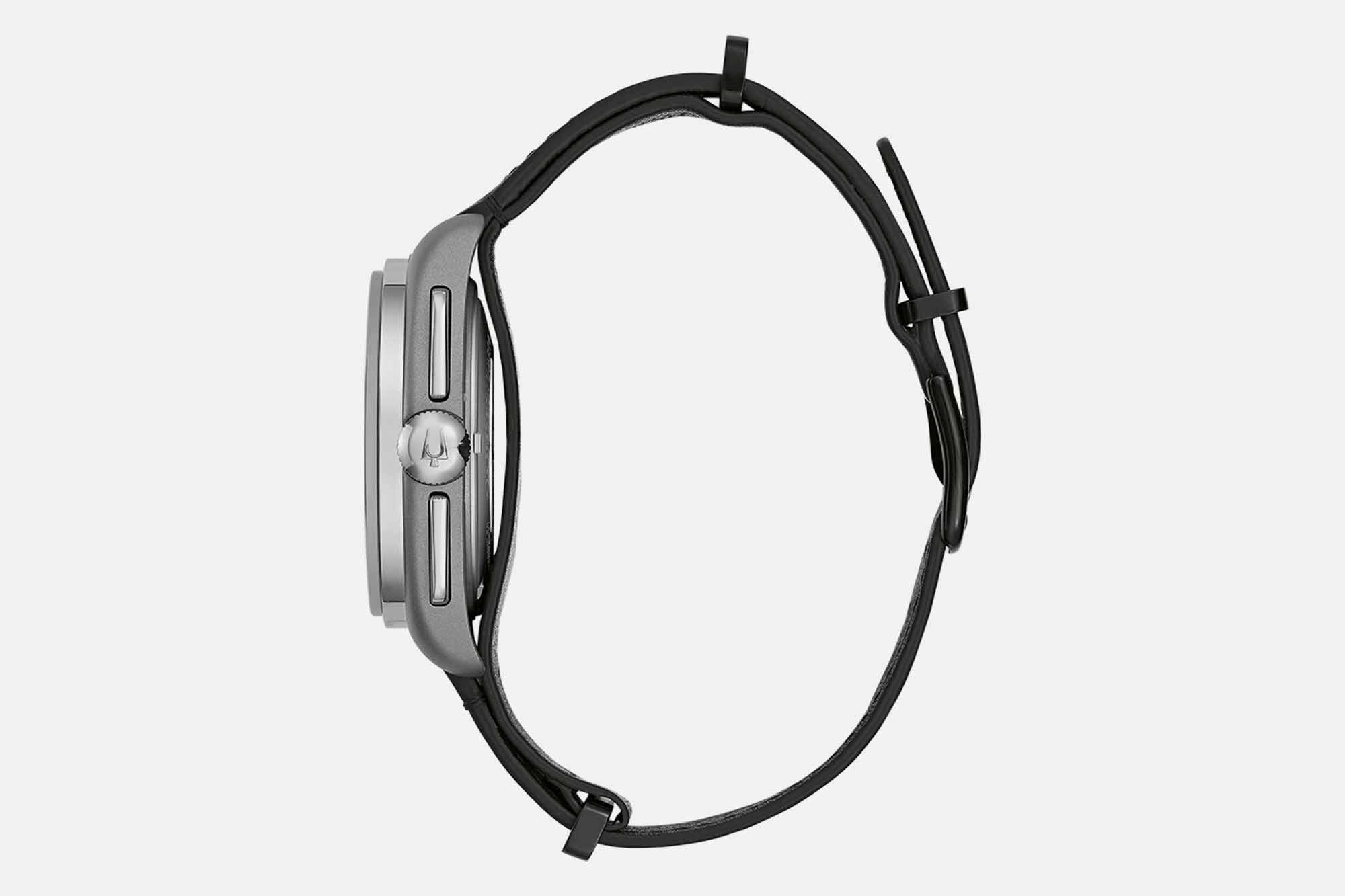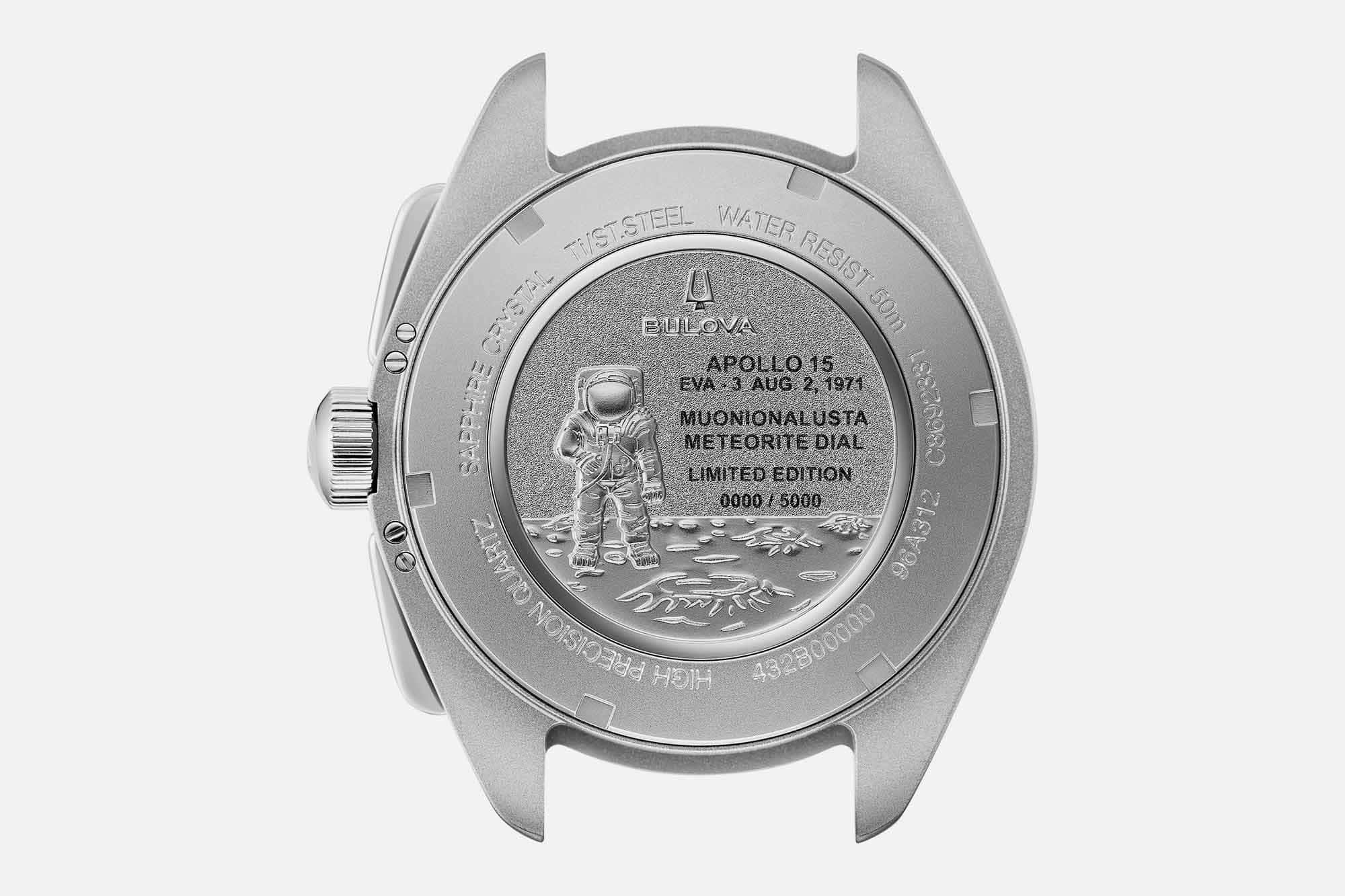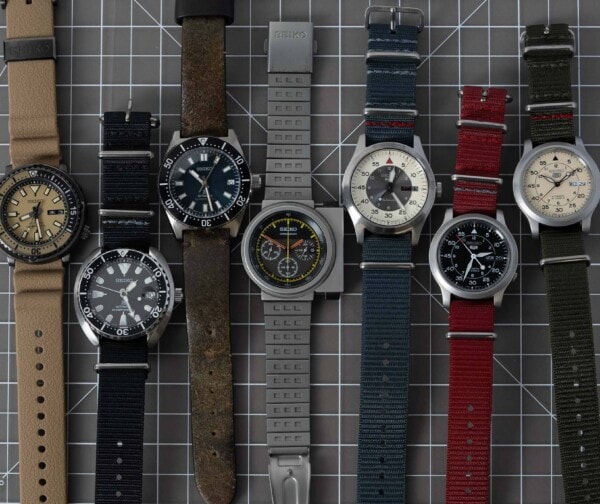Among watch brands, Omega won the race to the moon–it also won the PR war, and now whenever someone uses the term “moon watch,” your mind invariably turns to the Speedmaster. But while the Omega Speedmaster may have been the first watch to the moon, it isn’t the only one. In 1971, Apollo 15 mission commander Dave Scott became the seventh man to walk on the moon, and when he looked at his wrist to check how long he’d been out of the lunar lander, it was a Bulova that gave him the time. Forty-five years later, Bulova released a re-creation of this watch: the Lunar Pilot. Now, they’ve leaned into the space angle even more, with the Lunar Pilot Meteorite, which, as the name suggests, features a dial made of actual space rock.
The Bulova Lunar Pilot Gets a New (Actually, 4.5 Billion-Year-Old) Meteorite Dial
The Lunar Pilot was built to NASA’s specifications and, as such, bears some superficial resemblance to the Speedmaster as a three-register chronograph with a tachymeter. (Coincidentally, the Lunar Pilot Meteorite was also released shortly after the latest Dark Side of the Moon Speedmaster from Omega, which features a dial made to look like the lunar surface.) But a more rounded and slightly larger case–43.5 mm versus the 42 mm of the Speedmaster–with slim, rectangular pushers that span from the crown to almost the lugs gives the Lunar Pilot a unique silhouette.
The meteorite model features a dial crafted from a 4.5-billion-year-old meteorite that Bulova promises gives each of the 5,000 limited edition watches a unique crystalline pattern. A gray tachymeter matched with gray numerals further distinguish this from the classic black-dial Lunar Pilot, and the meteorite model further benefits from a steel-titanium hybrid case that brings the weight of the watch down.
An engraved caseback commemorates Scott’s moonwalk on August 2, 1971, showing the scene of an astronaut on the moon along with limited edition numbering and the name of the meteorite used for the dial: Muonionalusta, a meteorite that crashed into Earth in northern Scandinavia, and the first pieces of which were found in 1906. And with a leather NATO strap, the watch harkens back to how astronauts would have worn the timepiece: it’s hard to find enough links to fit a bracelet around a bulky space suit, after all.
Inside the watch is Bulova’s proprietary NP20 High Precision Quartz chronograph movement, which powers all the watches in the Lunar Pilot Line. Resonating at a frequency of 262 kilohertz, the movement is accurate to 1/20th of a second–8 times more accurate than a typical quartz movement. The frequency is so high that Bulova boasts the seconds hand sweeps in the style of a mechanical movement.
If you want a piece of space history–and a literal piece of space–Bulova is producing the Lunar Pilot Meteorite in a limited edition run of 5,000. With a price tag of $1,495, the meteorite edition’s cost is an increase from the $725 to $895 of regular lineup Lunar Pilots and $995 of other limited edition Lunar Pilot models.









 Featured Videos
Featured Videos




